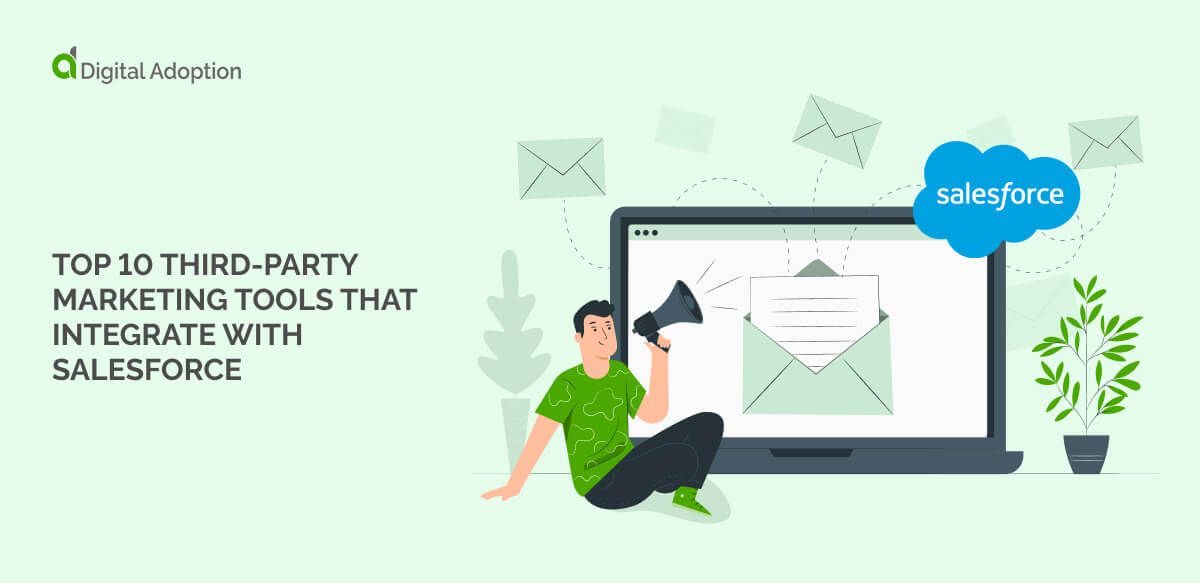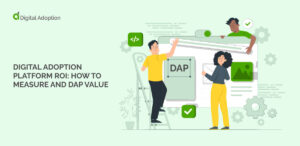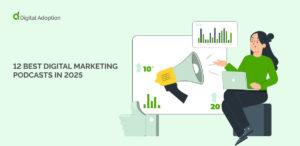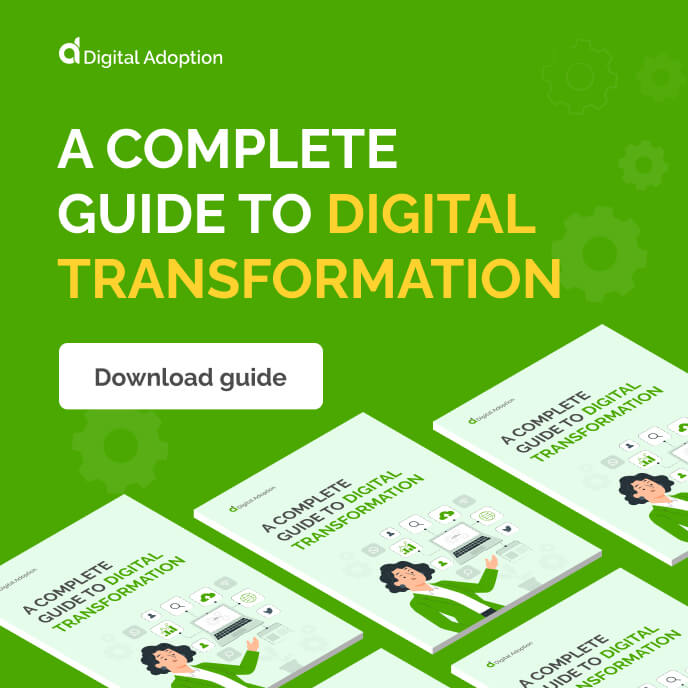Salesforce consistently takes the top spot as the world’s leading CRM platform. Businesses globally use the platform to manage customer relationships, automate processes, and gauge analytical insights into sales, marketing, and business performance.
While Salesforce tools include proprietary marketing solutions like Marketing Cloud and Marketing Cloud Engagement, numerous third-party, Salesforce-compatible marketing tools also exist.
For sales and marketing teams using Salesforce, these tools offer higher flexibility and customization when launching marketing campaigns.
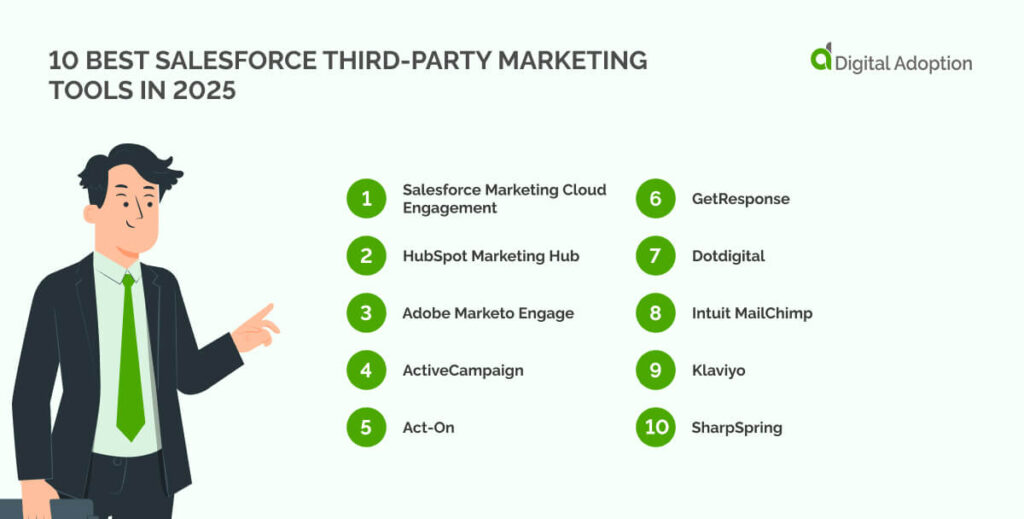
From unifying architecture, nurturing leads, and automating behavioral analysis, this article explores eight third-party marketing tools ideal for enhancing Salesforce adoption and platform integration.
1. Salesforce Marketing Cloud Engagement
- G2 rating: 4.0/5 (1,756 reviews)
- Best for: Email, SMS, and journey-based marketing at scale.
Salesforce Marketing Cloud Engagement connects customer activity data, campaign logic, and delivery tools within Salesforce. Initially developed by ExactTarget, the Salesforce-run app supports personalized messaging across email, mobile, and advertising channels, mapped to real-time behavior.
Journey Builder links marketing actions to lifecycle triggers pulled from Sales and Service Cloud, syncing content delivery with customer records. Marketers can segment audiences, deploy dynamic content, and track engagement all within Salesforce.
Native data sharing keeps interactions, preferences, and conversion signals unified across cloud apps.
Key features
- Triggered journeys: Launch campaigns from live Salesforce data.
- Dynamic segments: Target using native CRM rules.
- Cross-channel Sync: Coordinate email, SMS, and ads together.
Integrations
- Salesforce CRM: Natively connects with Sales and Service Cloud for audience sync and campaign tracking.
- Google Ads & Analytics 360: Links ad performance and site behavior to journey logic.
- WhatsApp & Mobile Studio: Supports direct message campaigns tied to contact records.
2. HubSpot Marketing Hub
- G2 rating: 4.4/5 (12,740 reviews)
- Best for: Mid-sized B2B teams requiring CRM-linked segmentation.
HubSpot Marketing Hub serves as a feature-rich, third-party marketing platform that syncs tightly with Salesforce CRM. Lead records, contacts, opportunity data, and engagement logs flow bidirectionally, so prospect behavior and campaign touchpoints update instantly inside Salesforce.
Its standout tool, Account-Based Marketing, combined with dynamic segmentation, empowers teams to build audience clusters based on CRM fields and website actions.
Additional strengths include built-in content hosting and SEO tools, behavioral workflows, and closed‑loop attribution. It’s especially suited to mid-size B2B and scaling companies seeking unified CRM-to-marketing alignment.
Key features
- Smart Lists: Auto-update segments from Salesforce fields and behavior.
- CRM Sync: Bi-directional data flow for leads, contacts, and campaigns.
- ABM Tools: Match Salesforce accounts with tailored content and ads.
Integrations
- Salesforce CRM: Two-way sync for leads, contacts, tasks, and custom fields.
- Zoom & Eventbrite: Connects webinar attendance and event data to contact timelines.
- Slack & Microsoft Teams: Sends campaign alerts and lead updates into team channels.
3. Adobe Marketo Engage
- G2 rating: 4.1/5 (2,969 reviews)
- Best for: Enterprise marketers managing high-volume campaigns across regions.
Adobe Marketo Engage connects directly with Salesforce campaigns, lead objects, and opportunity data to track influence across long sales cycles. Behavior-based logic adapts messaging mid-journey.
Custom engagement programs trigger based on Salesforce stage progression, not just email interactions. Sales users access real-time activity insights through the native Marketo Sales Insight module.
Unlike other platforms, it maps campaign influence to revenue using Salesforce Opportunity Contact Roles. This software is ideal for enterprise B2B teams managing complex, multi-touch buying processes.
Key features
- Lead nurturing: Automates email sequences based on user behavior.
- Audience segmentation: Groups contacts using filters, traits, and scoring models.
- Campaign analytics: Tracks campaign performance across platforms with clear reporting.
Integrations
- Salesforce: Bi-directional sync with lead, contact, and opportunity records.
- Zoom: Registers attendees, logs webinar engagement into lead profiles.
- Microsoft Dynamics 365: Maps CRM fields to marketing programs and scoring.
4. ActiveCampaign
- G2 rating: 4.5/5 (14,175 reviews)
- Best for: Sales-driven teams mapping emails to opportunity data.
ActiveCampaign syncs Salesforce opportunities to trigger automations tied to pipeline stages, allowing marketers to run behavior-based outreach as deals progress. Custom object support links campaign activity directly to CRM data, eliminating the need for external middleware.
Tags, lead scores, and automations mirror Salesforce rules, keeping outreach in step with account updates.
Designed for lean B2B teams, it suits operations needing tighter control across both sales and marketing without relying on complex integration stacks or developer input.
Key features
- Behavioral automation: Triggers emails and actions based on user behavior.
- Audience segmentation: Sorts contacts by tags, traits, and engagement.
- Multichannel campaigns: Send across email, SMS, chat, and integrations
Integrations
- Shopify: Syncs store orders, customer data, and triggers abandoned cart emails.
- WordPress: Embeds forms and tracks site visits for behavior-based automation.
- Zapier: Connects to 5,000+ apps for automating workflows across tools.
5. Act-On
- G2 rating: 4.1/5 (1,048 reviews)
- Best for: Marketers who score behavior within deal stages.
Act-On maps form fills, asset views, and email behavior into Salesforce fields tied to opportunity stages, eliminating the need for custom objects or flows.
Campaign assets and interaction histories remain visible to reps within the CRM, enabling them to launch tailored follow-ups without needing to switch tabs. Behavior scores shift dynamically as prospects enter or exit segmented lists, allowing targeting to adjust mid-campaign.
Especially effective for mid-sized teams, Act-On’s Salesforce integration favors marketers who need quick edits without requiring technical expertise.
Key features
- Behavior-based automation: Triggers emails and alerts based on site visits and campaign interactions.
- Adaptive segmentation: Builds live lists using CRM fields and engagement scores.
- Lead scoring: Scores contacts using custom logic and syncs results to Salesforce.
Integrations
- Salesforce CRM: Two-way sync of contacts, fields, and campaign history.
- GoToWebinar: Imports registration and attendance into campaign workflows.
- Webhooks/API: Extends workflows to external tools and platforms.
6. GetResponse
- G2 rating: 4.3/5 (797 reviews)
- Best for: Small teams syncing events into CRM records.
GetResponse connects directly with Salesforce, syncing your contact and lead lists every hour. It logs when someone opens an email, fills out a form, or initiates a chat, and then adds that activity to each matching record in Salesforce.
Sales teams can view which campaigns a user has interacted with directly from their Salesforce dashboard. You can also host webinars without purchasing additional software. If you need to track engagement or follow up in real-time, everything’s already built in, saving time and keeping your team focused on conversion.
Best suited for growing teams that value operational clarity and want project tools designed to evolve with their Salesforce strategy
Key features
- Email automation: Sends behavior-based emails triggered by site visits or link clicks.
- List segmentation: Filters contacts using tags, scoring, and custom fields.
- Conversion funnels: Combines ads, emails, and landing pages in one flow.
Integrations
- Salesforce CRM: Connects leads, fields, and tags through third-party sync tools.
- Shopify: Pulls product and customer data into campaigns.
- Facebook Ads: Tracks ad performance and adds leads to lists.
7. Dotdigital
- G2 rating: 4.4/5 (1,068 reviews)
- Best for: Teams running omnichannel marketing from Salesforce.
Dotdigital syncs email, SMS, and form interactions directly with Salesforce lead and contact records. It adds unique activity fields (I.e., email clicks and survey responses) that update natively without custom objects.
Users can launch campaigns from inside Salesforce and view contact engagement history across records. It suits mid-size teams that want omnichannel marketing embedded into the CRM.
Marketing preferences sync both ways, allowing reps and marketers to act on opt-ins, clicks, and behaviors within a single interface.
Key features
- Behavior tracking: Tracks clicks, page views, and form fills inside Salesforce.
- Cross-channel automation: Automates email, SMS, and social media posts based on triggers.
- Segmentation: Builds contact groups based on behavior, engagement, or predefined rules.
Integrations
- Salesforce CRM: Bi-directional sync for contacts, leads, and campaign responses.
- Magento: Connects purchase behavior to automate ecommerce campaigns.
- Microsoft Dynamics: Shares contact data and triggers campaigns from CRM workflows.
8. Intuit MailChimp
- G2 rating: 4.4/5 (5,298 reviews)
- Best for: Promotional campaigns triggered by CRM behavior.
Intuit Mailchimp is a marketing platform built around automated emails, personalized content, and audience insights. It syncs directly with Salesforce contacts and leads, pulling live CRM data into campaign workflows.
Engagement tags flow back into Salesforce, showing how each person interacted with the content. Predictive segmentation ranks contacts by their likelihood of response, helping teams focus their efforts.
Emails are adjusted based on CRM fields, such as past purchases or product interests. Best for small to mid-sized teams looking to automate campaigns or onboarding flows directly from CRM activity, reducing manual handoffs and improving response times.
Key features
- Email automation: Sends tailored emails based on signups, clicks, and time delays.
- Audience segmentation: Filters contacts by tags, behavior, and custom fields.
- Campaign performance: Monitors open rates, conversions, and engagement by source.
Integrations
- Salesforce: Two-way sync for contacts, audiences, and campaign metrics.
- Mandrill: Sends transactional emails triggered from Salesforce workflows.
- SurveyMonkey: Maps survey responses to Salesforce contact fields for targeting.
9. Klaviyo
- G2 rating: 4.6/5 (1,080 reviews)
- Best for: eCommerce teams using Salesforce order data.
Klaviyo is a customer messaging platform built for dynamic ecommerce workflows. It pulls product, order, and contact data directly from Salesforce, then uses event-based triggers to send emails at the right time based on user behavior.
Predictive analytics model expected spend and churn, recalibrating segments automatically. Campaigns are reshaped based on browse history or cart status pulled from Salesforce fields.
eCommerce teams benefit most when product launches, tailored flows, and post-purchase messages are tightly synced to real-time actions within their CRM.
Key features
- Predictive targeting: Forecasts churn and buying intent using custom scoring models.
- Event-based automation: Triggers flows from cart, browse, and checkout behaviors.
- Salesforce integration: Syncs contacts, custom objects, and product feeds for segmented campaigns.
Integrations
- Salesforce: Syncs contacts, custom objects, and engagement data.
- Shopify: Imports purchase behavior and syncs back to Salesforce via Klaviyo.
- Typeform: Captures form responses and routes leads to Salesforce campaigns.
10. SharpSpring
- G2 rating: 4.0/5 (22 reviews)
- Best for: Agencies syncing client data across pipelines.
SharpSpring connects directly to Salesforce, pulling in email clicks, page visits, and form activity into contact records without delay. Marketers can build if/then automations that trigger based on changes to Salesforce fields.
It updates lists automatically, so users don’t have to manage segments manually. The platform suits B2B teams or agencies juggling multiple clients. This is because it helps unify tracking across marketing and sales tools without needing a developer to keep things aligned.
Key features
- Dynamic email campaigns: Send behavior-based emails triggered by user actions.
- Visitor ID tracking: Identifies anonymous site visitors and tracks interactions.
- Lead scoring: Ranks contacts based on engagement, page visits, and email activity.
Integrations
- Salesforce: Syncs leads, opportunities, and campaign data between platforms.
- Google Ads: Tracks ad clicks, automates follow-up, and monitors ROI.
- Zoom: Connects meeting data to contact records and automates outreach.
How do you choose the right marketing tool for your business?
Finding the most beneficial marketing tool begins with understanding how each tool integrates with Salesforce and its position within your digital workflow.
Some solutions plug directly into contact records, campaign histories, and lead stages. Others may need extra configuration to sync fields or track engagement.
It helps to map out the tasks your teams do every day (whether that’s email sends, reporting, or list segmentation) and compare them to the features each platform offers out of the box.
As sales and marketing teams move faster, the right digital tools should work together at scale. But that’s easier said than done, especially when teams juggle disconnected apps, duplicated data, and manual processes that slow everything down.
Done right, these choices create a digital transformation that’s grounded in pragmatic, repeatable workflows.
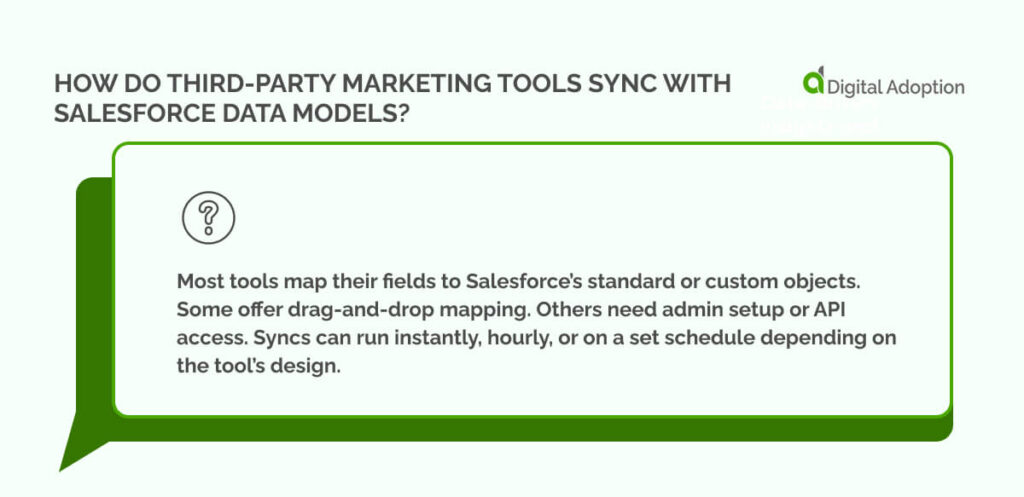
People Also Ask
-
Can third-party marketing tools fully integrate with Salesforce?Some tools connect deeply with Salesforce, while others only share basic data. Look for apps built on the Salesforce Platform or available on AppExchange. These often use native objects like leads, contacts, and campaigns—so updates flow in and out without custom code.
-
How do third-party marketing tools sync with Salesforce data models?Most tools map their fields to Salesforce’s standard or custom objects. Some offer drag-and-drop mapping. Others need admin setup or API access. Syncs can run instantly, hourly, or on a set schedule depending on the tool’s design.
-
Can external platforms update Salesforce campaign records in real time?A few can. These often use Salesforce’s APIs or event triggers to post updates as they happen, like when a lead clicks a link or fills out a form. Other tools send data in batches, so it may take a few minutes or longer to reflect.

